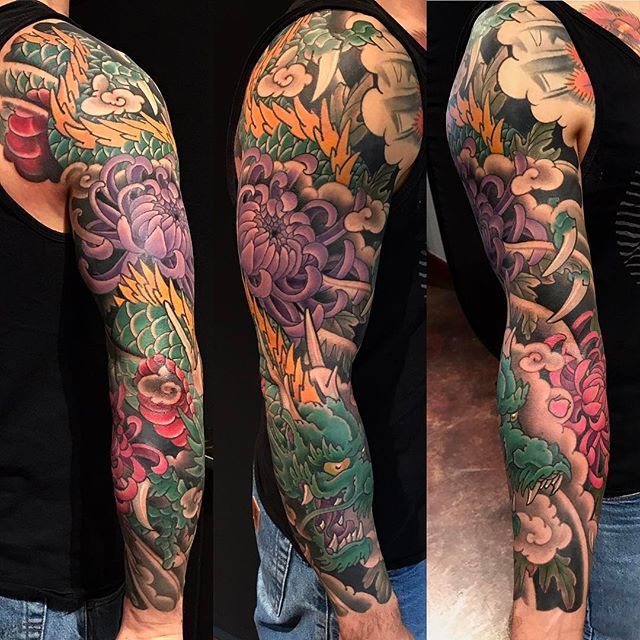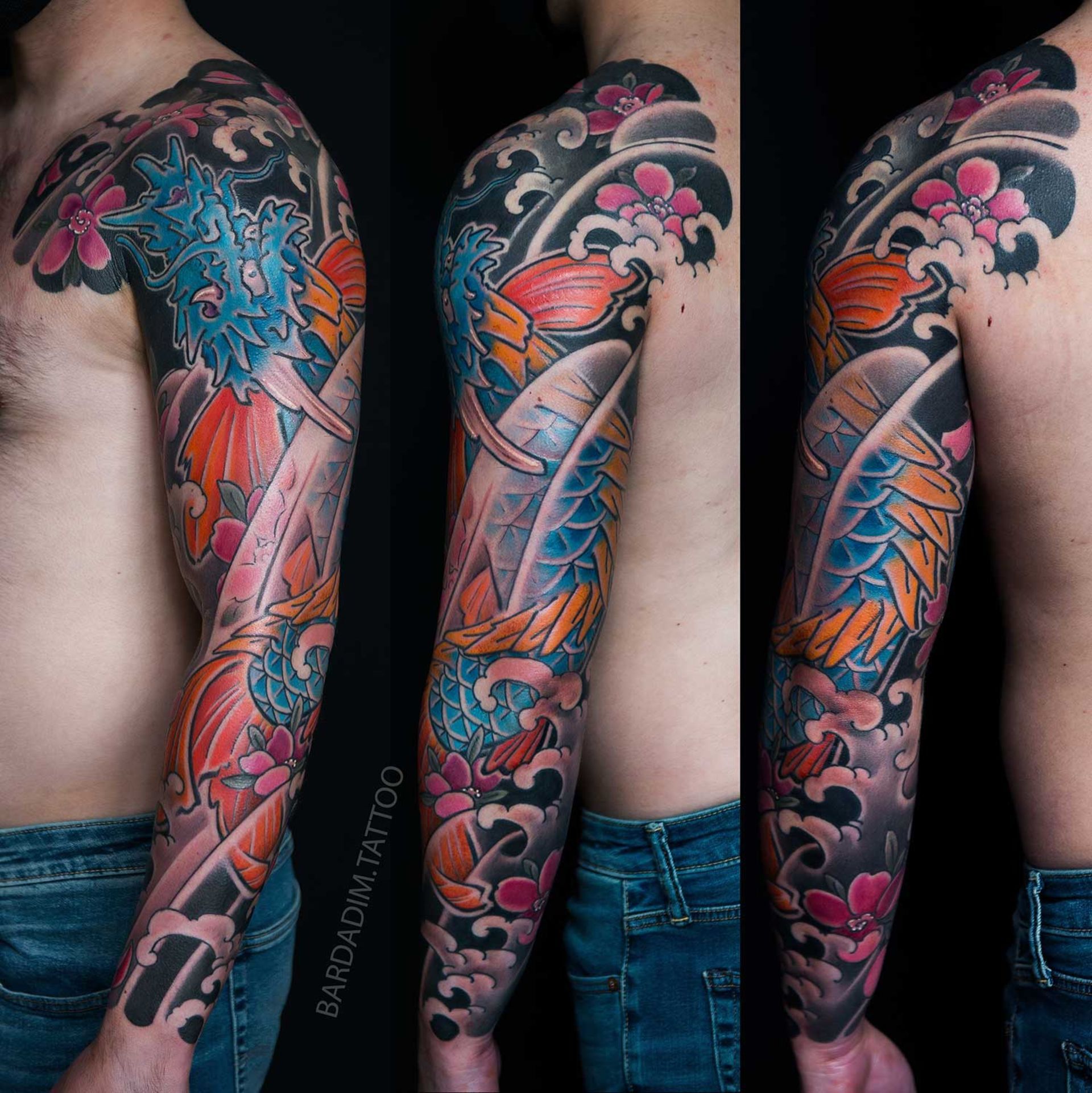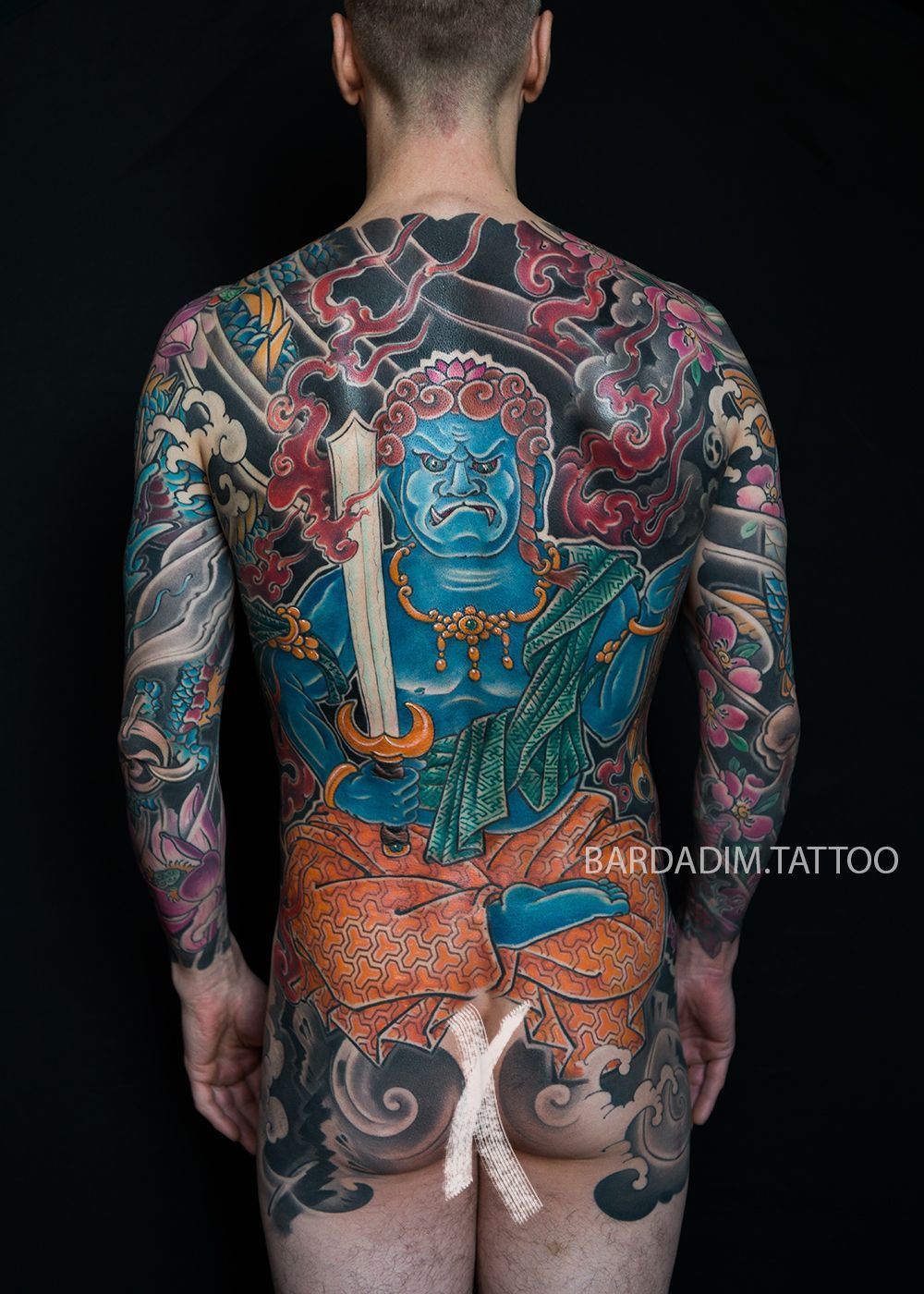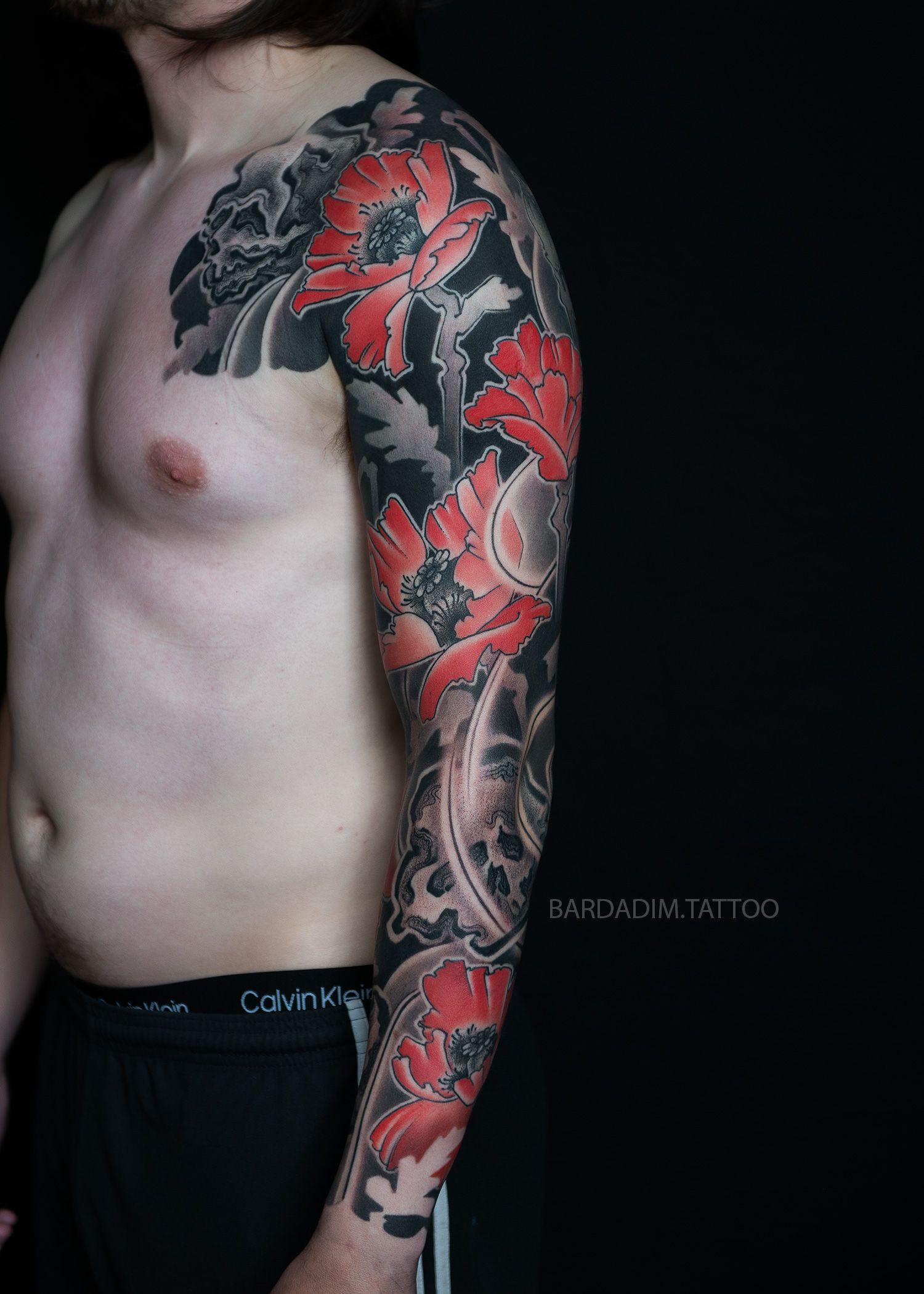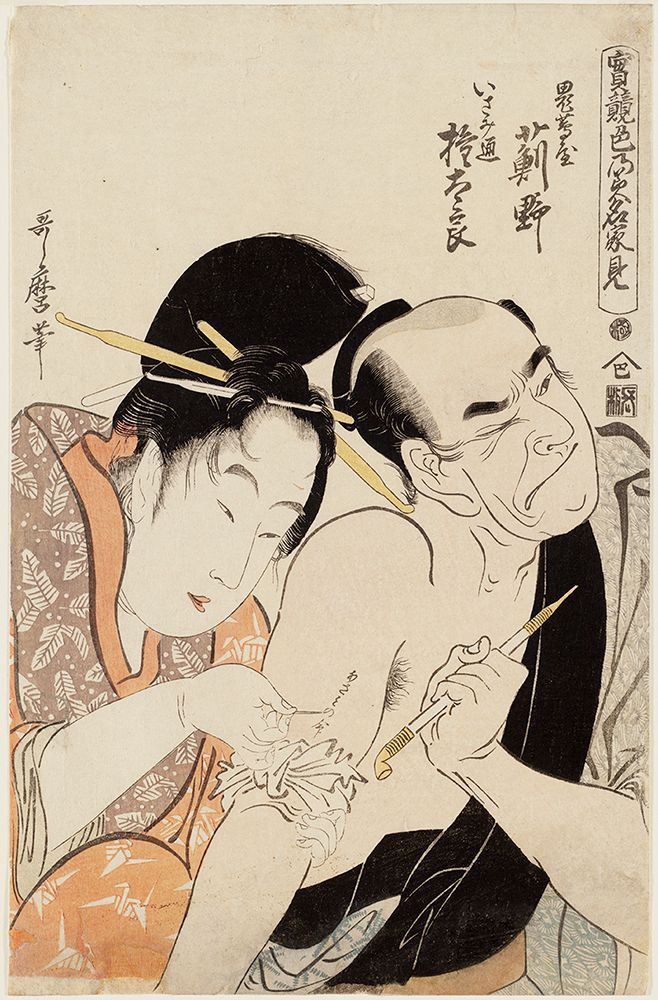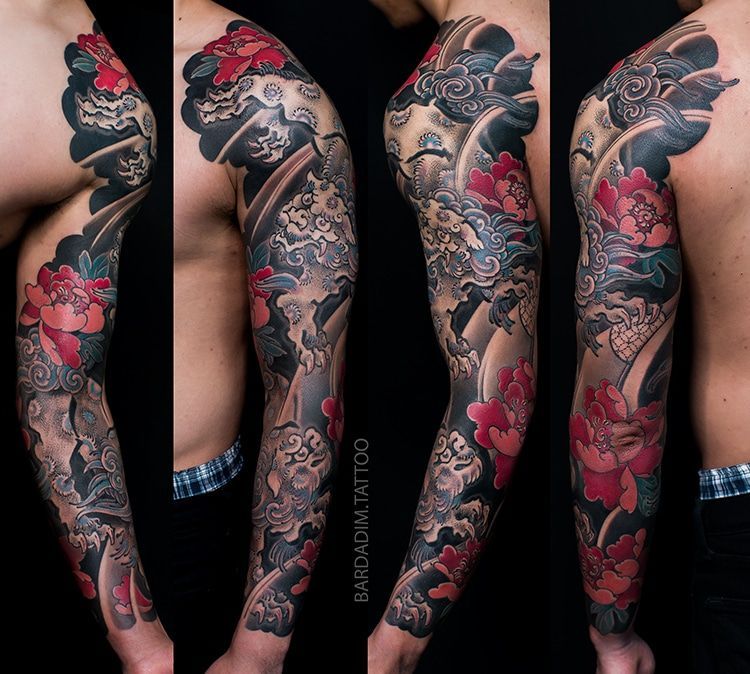Dragon Japanese Tattoo.
This Dragon Japanese Tattoo sleeve is finally finished today at Tattoo Culture, Brooklyn. It took just few month to complete! The tattoo shows Japanese dragon in clouds and chrysanthemum flowers.
Dragon in Japanese Culture.
Japanese dragons (日本の竜 Nihon no ryū ) are diverse legendary creatures in Japanese mythology and folklore. Japanese dragon myths amalgamate native legends with imported stories about dragons from China , Korea and India. The style of the dragon was heavily influenced by the Chinese dragon. Like these other Asian dragons , most Japanese ones are water deities associated with rainfall and bodies of water, and are typically depicted as large, wingless, serpentine creatures with clawed feet. The modern Japanese language has numerous “dragon” words, including indigenous tatsu from Old Japanese ta-tu , Sino-Japanese ryū or ryō 竜 from Chinese lóng 龍 , nāga ナーガ from Sanskrit nāga , and doragon ドラゴン from English “ dragon ” (the latter being used almost exclusively to refer to the European dragon and derived fictional creatures). ( Wikipedia )
Dragon Japanese Tattoos: wisdom, strength, force for good, wind/water. Dragons in the West traditionally symbolize strength, ferocity, and wealth. Dragons are destructive forces, but they are also considered guardians.
Kiku. Chrysanthemum Tattoo.
From China, the chrysanthemum made its way over to Japan by Buddhist monks in AD 400. Soon after its introduction, the Japanese were so enamored by this beautiful flower that it was soon adopted as the emperor’s crest and official seal. “Kiku” is the Japanese name for chrysanthemum and every year there is a National Chrysanthemum Day which is also referred to as the Festival of Happiness.
KIKU Cultural Significance
Since the chrysanthemum was first cultivated in China, the flower still holds deep cultural significance to this day, especially in art. The chrysanthemum is one of the Four Gentleman, which include the plum blossom, the orchid , and bamboo. These are the four main plants depicted in traditional Chinese watercolor paintings, and are derived from Confucianism.
In Japan, the official seal for the Imperial family is a chrysanthemum with 16 petals and is used for official government documents. In the military, the Supreme Order of the Chrysanthemum is the most prestigious honor that can be awarded by the Emperor. ( Source )


